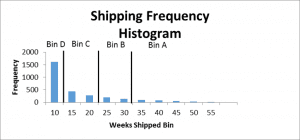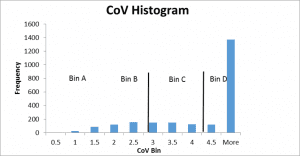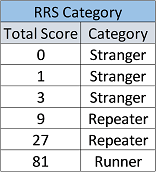RRS
Author: Phil Ralphs
RRS Analysis
- Lean is all about removing waste from the process. Runner, Repeater, Stranger (RSS) analysis will remove excess motion and transportation from your processes. RRS is similar to the 5S concept of storing what you use most frequently closest to you. The products or transactions that you touch the most frequently should be organized in locations that will minimize transportation and motion.
- RRS analysis requires frequency and quantity data for the products or transactions. The data is then analyzed based on frequency and variation in quantity to identify the runners, repeaters, and strangers. The Coefficient of Variation (CoV) is used to test for statistical variation. The frequency and CoV are assigned a weighting and scored. Each product or transaction can then be given a numerical score that represents frequency and CoV. All products or transactions can then be sorted into RRS to reduce waste in the process.
- When Runners, Repeaters, & Strangers are known we can modify our processes to minimize the wasted motion and transportation.
- Scheduling strategies can be created for Runners, Repeaters, & Stranger
- Implement Kanban for fast moving (Runners) product
- Look at special order only for Strangers






